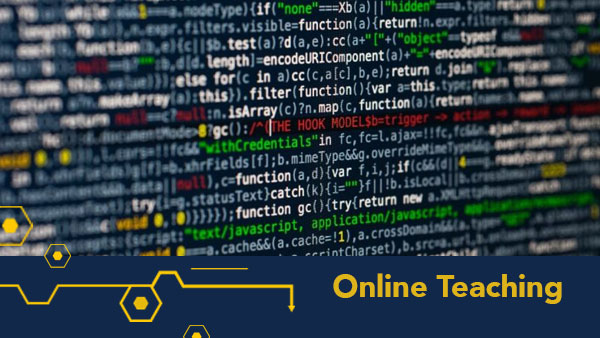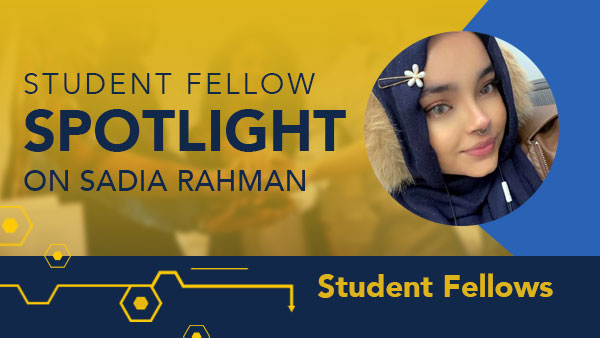Barry Fishman, Faculty Innovator-in-Residence
@barryfishman
In the first post in this series, I described the Big Idea, an effort to re-think residential undergraduate education at Michigan, led by the Office of Academic Innovation. In this post, I describe the AIM:TRUE series of talks, designed to provoke our thinking about undergraduate education and inform the design of the Big Idea.
The Academic Innovation at Michigan: Transforming Residential Undergraduate Education (AIM:TRUE) speaker series is an opportunity for campus to interact with and learn from individuals and groups who are exploring and innovating in the undergraduate space. These speakers are intended to inform our evolving thinking about the Big Idea, and also to connect with and inform related efforts across campus. During the fall term, we had our first two speakers in the series: The leadership of the Mastery Transcript Consortium, and David Scobey, Director of the Bringing Theory to Practice project.
A New Kind of Transcript for College Admissions
The Mastery Transcript Consortium (MTC) is “a growing network of public and private high schools who are creating a high school transcript that reflects the unique skills, strengths, and interests of each learner and that supports educators in facilitating the kind of learning that they know is best for students” (quoted from the MTC web site). The MTC is reinventing the transcript, and in the process issuing a challenge to higher education to expand the college admissions process to go well beyond GPAs and course credits. In September, we were visited by three MTC leaders: Founder and Board Chair Scott Looney, Executive Director Stacy Caldwell, and Chief Product Officer Mike Flanagan. In their AIM:TRUE talk, the MTC team explained the motivation behind their work, how they are growing a network (currently at more than 150 independent and public schools), and how they are building new technological tools to enable high school students to better represent themselves and colleges to better identify students who are a match with their institution.
MTC argues that an increasingly competitive college admissions landscape has caused students to become too focused on maintaining a high GPA, leading to grade-grubbing and anxiety. When students are focused on the “final score,” they are not focused on what matters: learning, risk-taking, self-expression. Based on its name, you might guess that the MTC “mastery transcript” focuses not on numbers but on what a student has demonstrated they can do. Similar to a portfolio, a mastery transcript allows learners to self-author representations of their learning tailored to different audiences. However, because it is digital, the mastery transcript can link to evidence of accomplishment, and allow for admissions officers to look for particular attributes that are a match for their institution.
For a university like Michigan, the idea of a mastery transcript is appealing, as we are interested in learners who show deep commitments in a range of areas, in addition to general academic excellence. But we are also reviewing many tens of thousands of applications every year (nearly 60,000 in the 2017 cycle). How do we balance the desire to know as much as is possible about applicants with the need to review so many applicants in a short amount of time? How do we make sure that the process is equitable, and all applicants have the same opportunities to present themselves for review? As we think about the “Big Idea,” we are particularly interested in the question of undergraduate admissions, as we seek students who might not fit the “standard” academic profile. The MTC AIM:TRUE talk helped to crystallize many current issues in college admissions, helping to point the U-M towards a likely future.
Current Crises and Creative Currents in Higher Education
Our second AIM:TRUE speaker was David Scobey, who was named Director of the Bringing Theory to Practice Project (BTtoP) earlier this year. The BTtoP project was established in 2003 in partnership with the Association of American Colleges and Universities (AAC&U). The BTtoP mission “is to encourage and support colleges and universities in developing sustainable campus cultures that support the greater purposes of higher education: engaged learning and discovery, civic purpose, well-being, and preparation for a meaningful life” (BTtoP web site).
If Dr. Scobey’s name is familiar, that might be because he was a member of the Michigan faculty from 1989 to 2005, teaching American Studies, U.S. Cultural History, and the history of urbanism and architecture. During his time at U-M, he helped guide the university’s thinking about public engagement and the purpose of undergraduate education. Since leaving Michigan, he has continued in these roles, including serving as the inaugural Director of the Harward Center for Community Partnerships at Bates College, and the founding Executive Dean of the School for Public Engagement at The New School in New York City. As should be apparent, David Scobey has devoted his career to helping higher education understand and define its purpose, and to explore structures that enable higher education to fulfill that purpose. In other words, a perfect speaker to help advance our thinking in the AIM:TRUE series.
Dr. Scobey’s talk, entitled, “Current Crises, Creative Currents, Guiding Purposes: Notes For Navigating the Shoals and Storms of Higher Education,” provided historical context for the current challenges facing higher education. These crises include financial stress, reduced public support, changing demographics, and a “legitimation crisis” about the value of college to students. Because of his personal history at the University of Michigan, Scobey was able to discuss both the unique challenges we face as a large and selective public institution, and also the broader context of higher education. Dr. Scobey describes our present circumstances as a “Copernican moment,” creating the opportunity for a paradigm shift that reorganizes, “Our educational practices, the way that academic institutions are organized, the ways that students and educators move into and through them, and (maybe most important) the larger social compact by which higher education negotiates its justifying purposes and secures the resources and autonomy to pursue them” (from David Scobey’s talk on 12/7/2018). These are issues that all need to be addressed in our thinking about the Big Idea.
In his talk, Scobey described five ways that higher education is responding to current crises. The first is a greater focus on college completion; helping those who enter college to earn their degree in a timely manner. Another (related) response is a greater focus on retention and attainment for traditionally underserved students (one focus of the U-M’s DEI initiative). A third is a focus on the growing market for adult learners through continuing and extension forms of education. Which in turn is related to the fourth response, the growth of online platforms for accessing education, including the use of MOOCs. And the fifth is a growing turn towards what Scobey termed “instrumental vocationalism,” in which the value proposition of higher education is defined in terms of how directly a degree leads to employment. Clearly, not all of these responses are unequivocally good, nor are they all guaranteed to lead to positive change in higher education. The path forward for higher education is not predetermined, but rather up to society—and most centrally higher education institutions ourselves—to determine. Scobey reminded us of “high impact practices” that have been demonstrated to lead to positive outcomes for college students, and which are also useful for thinking about the way we choose to design or re-design higher education in light of the above responses. Most of all, Scobey urged, it is important that our response be guided by a thoughtful re-examination of our purpose as an institution of higher learning.
You can view the entire talk below.
While on campus, Dr. Scobey also spent time with groups exploring the University’s focus on public engagement, and groups thinking about how we define (and redefine) the value of undergraduate education, including the Big Idea working group. Consistent with his overall work, Dr. Scobey encouraged the group to keep focused on student voice and purpose as we design our new undergraduate program (more on this in future posts).
AIM for the Future
Stay tuned for future talks in the AIM:TRUE series, and we have some great speakers lined up and more in the works. We aim to continually engage with leaders and thinkers who challenge our thinking and show us examples of how undergraduate education could be different, and better both for students and for the mission of the public research university.


